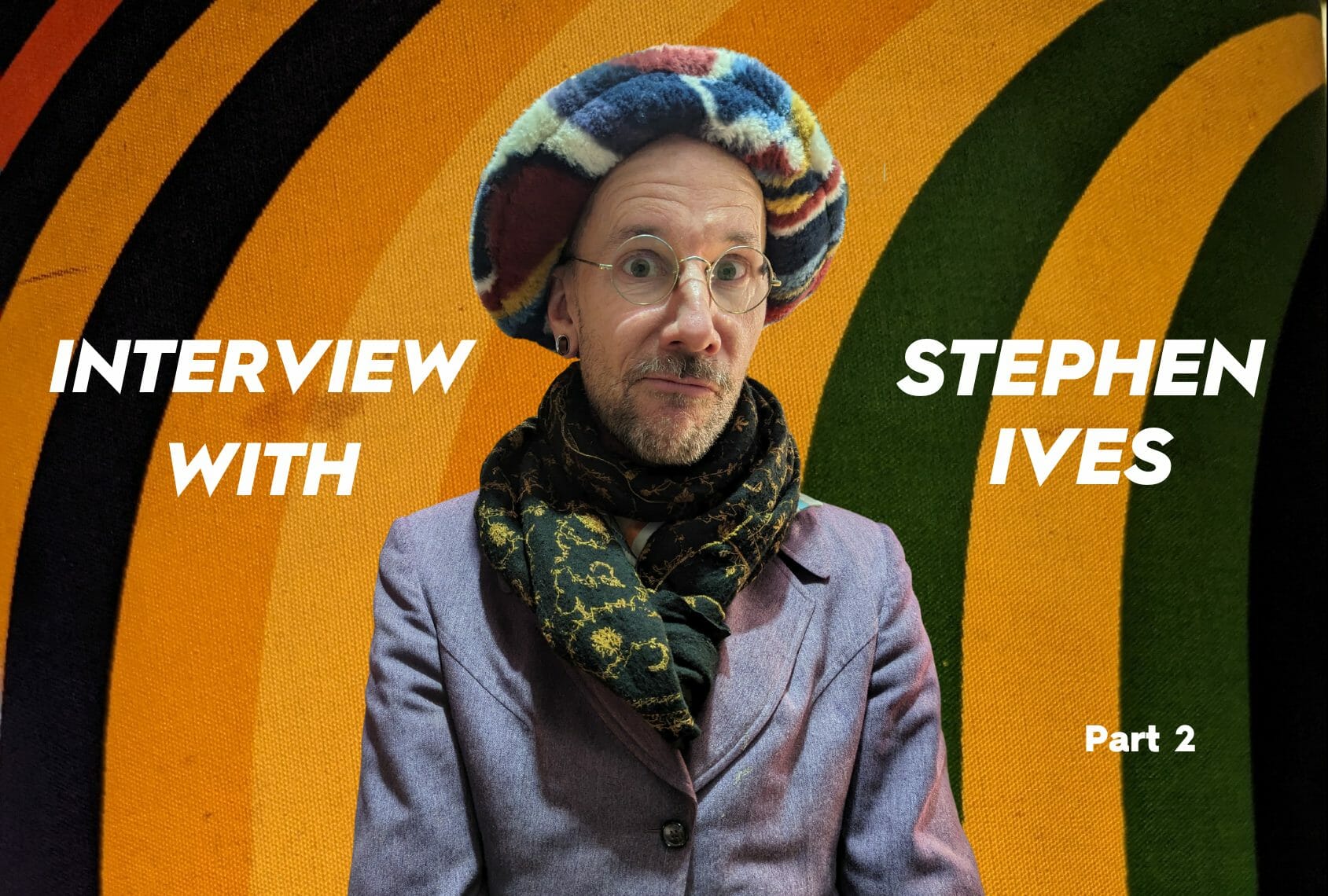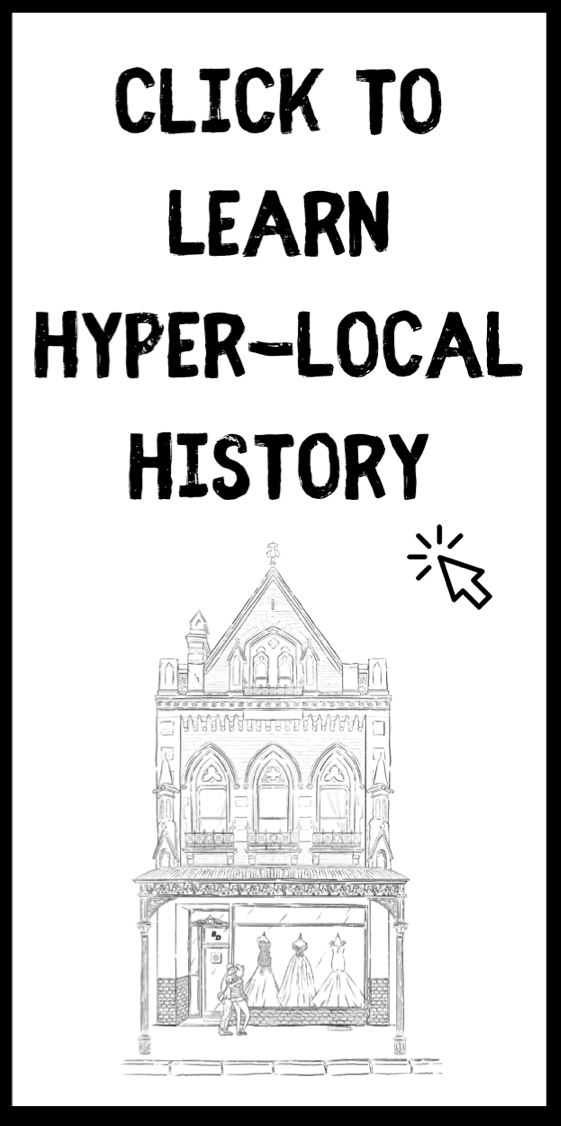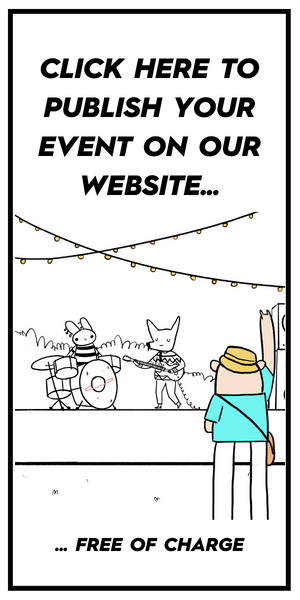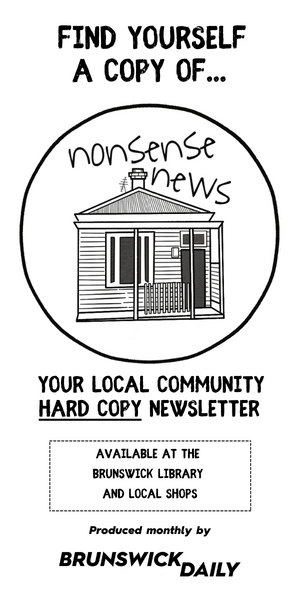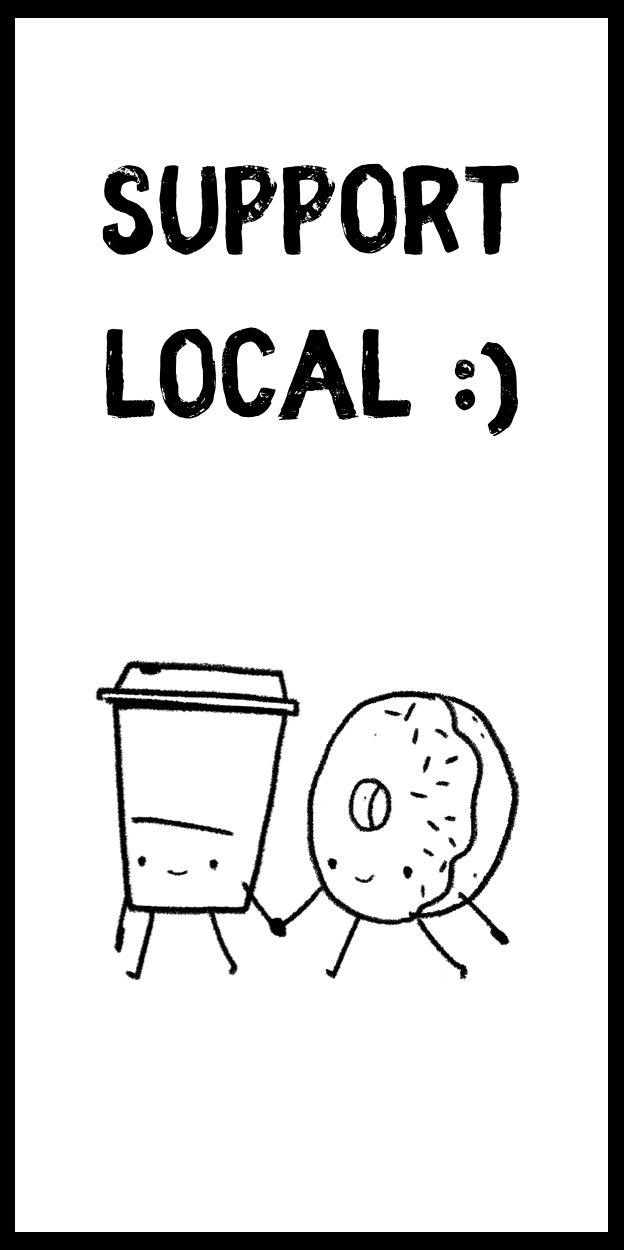Click here if you haven’t read Part 1 of this interview or want to refresh your memory.
Pablo (P): From my perspective, your drawings in Nefilabata always had a punchline.
Stephen (S): Explain that.
(P): Well, looking at your drawings I felt I was getting somewhere and then BOOM! Something that I didn’t see was coming and it either made me laugh or wonder. That’s the effect that it had on me. There were other drawings that are just really full-on but it still made me wonder what the hell is happening here? And others that I think it’s a combination of both.
The one that I remember with a punchline was an upside-down kind of world.
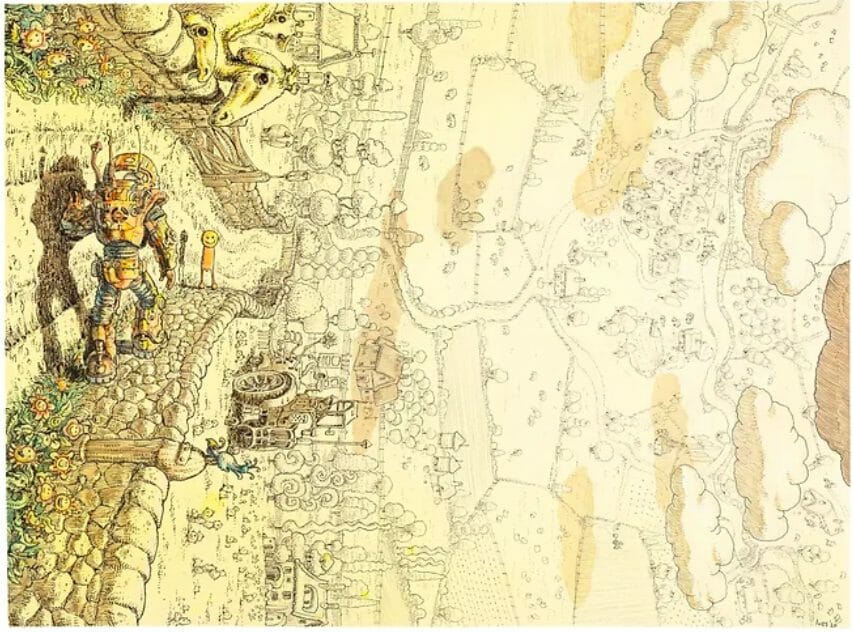

On the Wall. Source: stephen-ives-artist.com
(P): And the one that felt really full on to me was the aeroplane about to crash.
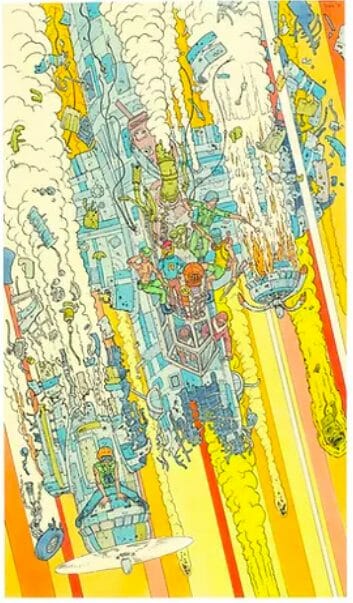

All going to plan Source: stephen-ives-artist.com
(P): And the one where there’s a very rich dialogue between what seems to be a gynaecologist and a woman’s body.


Pillowbook. Source: stephen-ives-artist.com
(P): Before this interview, I talked to my brother who is an artist as well and he suggested I asked you about Sci-fi Art from the 80s, Robert Crumb, and the comic punk scene.
(S): I know Robert Crumb’s work and the artists who were around him and the one who had a bigger influence on me is Mobius, Jean Giraud Mobius, the French comic book artist. He was a big influence in my early 20s after I went to France. He visualised the fifth element, Alien and Blade Runner. He is the f***ing master. I can show you some of his work.
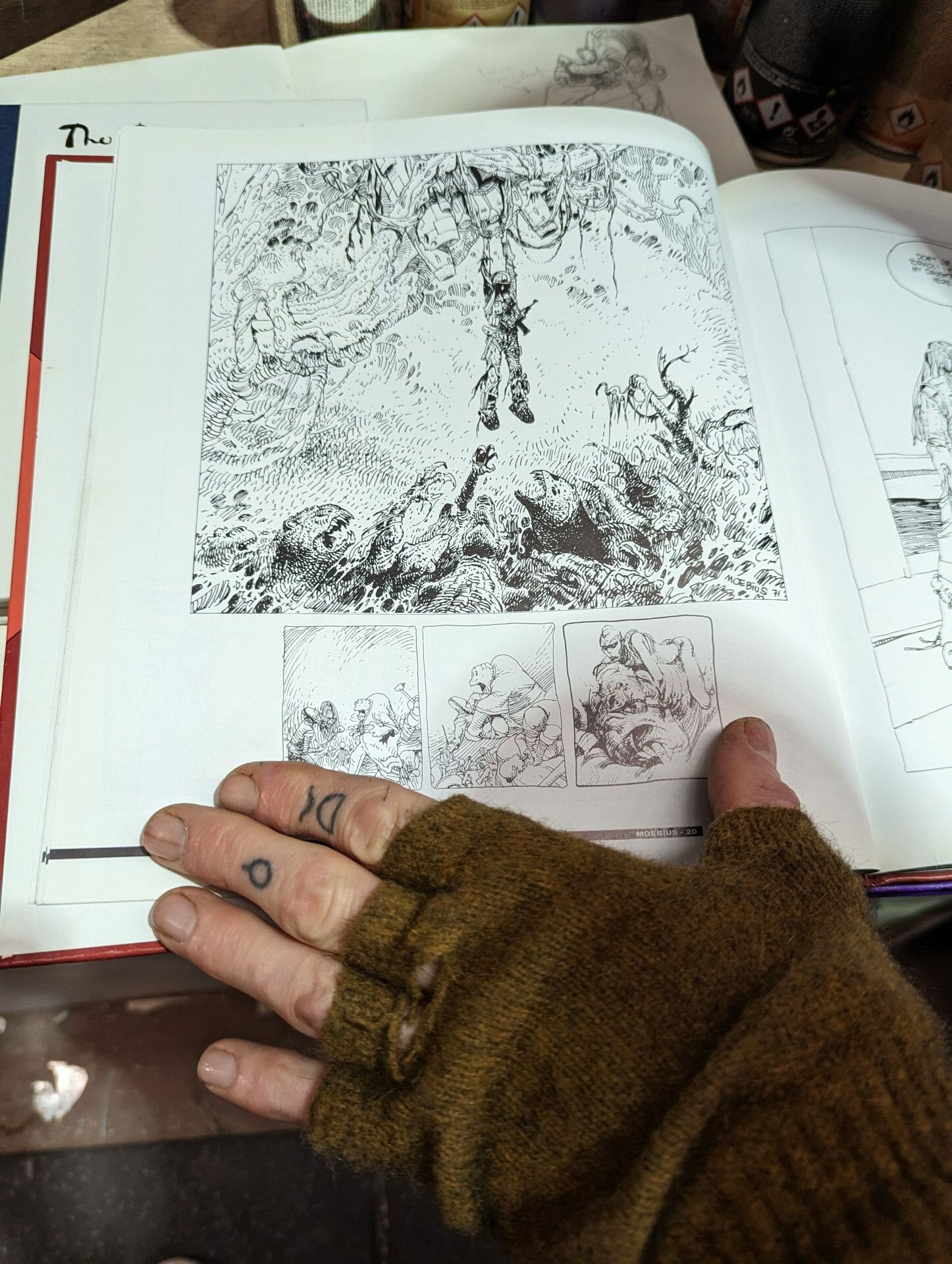

Jean Giraud Mobius. Photo: Author
(S): I grew up in England and I actually grew up watching punk that’s why I’m into big boots and tattoos and shaved head and stuff. So it’s coincidental to my work because punk is about breaking and not following rules. And it’s funny because I tend to try to break my style to improve it. I don’t have a college degree and I’ve been left to do my own thing. And that to me is a creative act.
It surprises me when I go to exhibitions, you walk in and there’ll literally be 20 of the same picture on the wall. It always surprises me, you go to the next show and it’s 20 of the same thing, again. That’s great as a commodity for a gallery and for collectors because they know what they’re getting. It’s sellable.
The most successful artists are the ones who tend to kind of not move around a lot but they’re predictable and they’re iconic in their imagery. Rowan, the graffiti artist is a classic example.
(P): Is there a term for that in the art world? Because you’re making me think of fast food.
(S): It’s just the art world with capitalism. It means capitalism.
Me as an artist, though, if you’ve been watching my work for a long time you can start seeing things running through it. I did that whole drawing show which is all kind of fantasy comic book art from the 70s and 80s and then if you see my cafe drawings, they’re all abstract. And influenced by f***ing German expressionism and, you know, and Ralph Steadman and all this kind of s**t. And then I’ve got a whole lot of sculptures up there, which are all really simple raw junkie brick collage.
And then I’ve got this thing which took a year and a half of meticulous, gothic, plastic manipulation.


Spiritus Mundo. Photo: Author
There’s a whole realm of painting I want to get into from sitting doodling, drawing with my coffee every morning. Most people don’t even know I do that because I’ve never touched for 20 years or more.
Art is not a linear thing. Look at art history. You take the course and you look at artists to get the impression that they went I did this and then I had this period and then I had this period and then I had this period. But I think that’s because the academic has tried to make sense of all the artwork and they’ve methodically put someone’s work thinking they went through a period which led onto this period which led onto this period.
I don’t think it works like that for a really good artist. But in hindsight, they need to make some sense of it. That subsequently gets used to teach art. They’re thinking how do we teach creativity? Creativity is a very strange and difficult thing to wrap your head around.
Yet they go, okay you get an idea, you work through it A to Z. Your write some essays about it, blah, blah, blah. . This just kills creativity for most people I know who’ve been through college.
But it’s not like that, for me it’s about the child inside you. It’s trying to get back to that raw energy of the child, and there’s an adult involved as well who has the skills and maybe can tweak things, but it’s about the energy that responds to the question What am I going to do today? This is how I’m feeling, this is what’s going to come out, this is the idea I want to explore.
(P): I’m connecting what you’re saying with the quotes that you have on the wall.
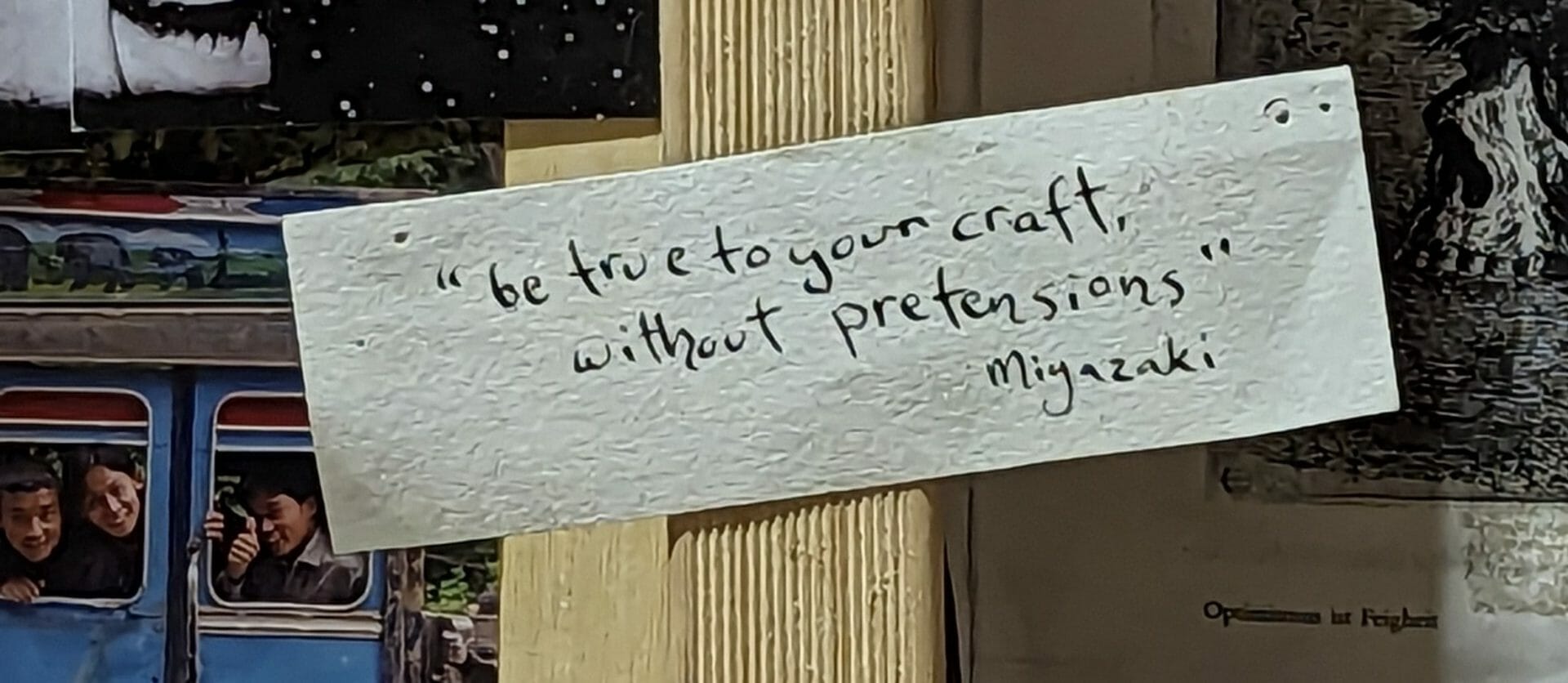

“Be true to your craft, without pretensions” Miyazaki. Photo:Author
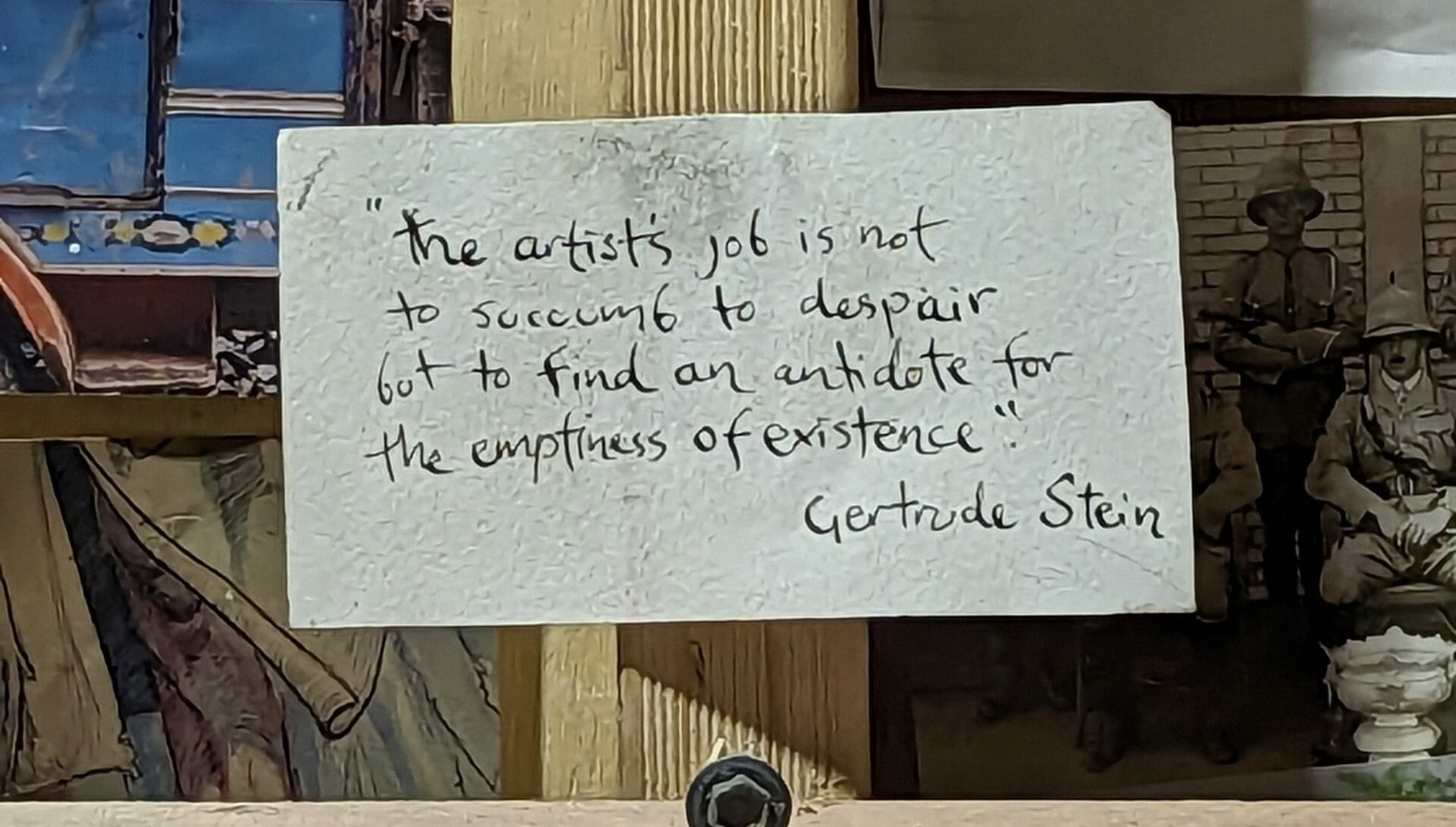

“The artist’s job is not to succumb to despair but to find an antidote for the emptiness of existence” Gertrude Stein. Photo: Author
(S): Those phrases mean more and more as I get older.
(P): What do they mean to you now?
(S): It’s why I’m here! I don’t know what the f**, the rest of humanity does if they don’t have a creative practice, watch Netflix? I have no idea. I’m sure people have hobbies and socialise, but this what makes it worthwhile for me.
It’s like indulging that side of that energy that comes through me. It’s something that’s outside of me.
(P): But at the same time I think that sometimes when you hear the word self-indulgent or selfish typically has a negative connotations. From the quote that says “… an antidote for the emptiness of existence” makes me think that self-indulgence for an artist is not necessarily negative.
(S): Yeah. I’d say probably a better word that is used a lot when people see my work is whimsy. It’s very much like just about a moment and what’s coming out. That’s what I do try to indulge, the child who just picks up something and goes These two things together! This has to happen!
(P): I think we could have many other interviews!
(S): Yeah, I don’t often have interviews and when I do it’s kind of nice because you will ask questions that will then make me consider things I might not have considered and you make me have to think about things. Like in an exhibition, you get revelations from seeing things from a different angle.
(P): Thanks for the chat!
(S): Pleasure, Pablo. Lovely to meet you!

